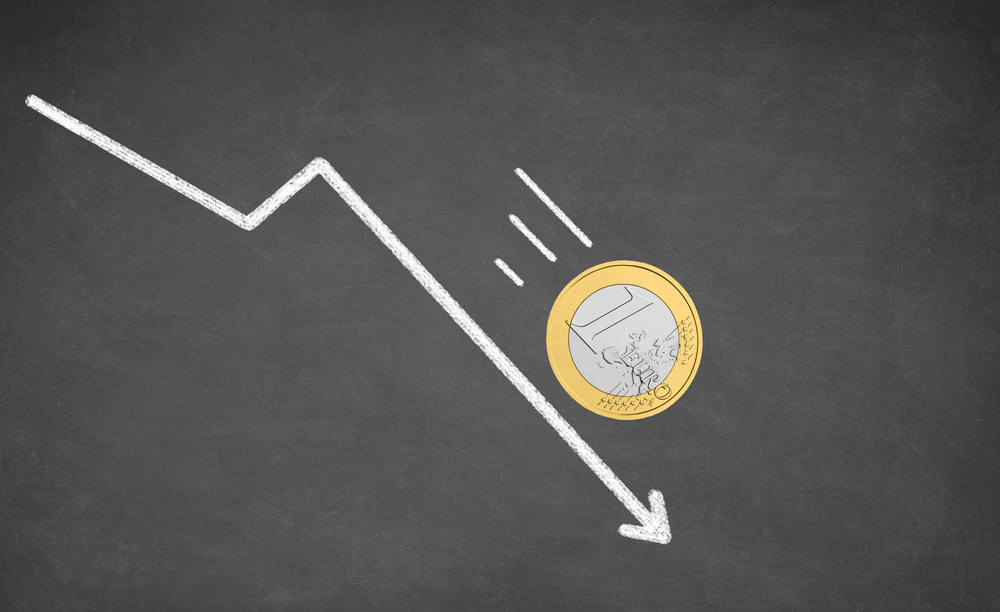
The chances of a rate cut by the European Central Bank this week appeared to rise a little on Wednesday – leading to problems for the currency.
Overall, analysts still appear to suspect that maintaining the current rate of 0% is more likely, but there is now believed (by the money markets) to be a 45% chance of a cut equal to the value of 10 basis points.
Alternatively, the Bank could keep the current rate as it is but hint that there will be more reductions as time goes on.
The euro fell in the EUR/USD pair by a fifth of a percentage point, and at one stage it hit $1.1127.
Overall, the single currency has dropped by just over 2% over the course of July.
As well as the risk posed by a potential slashing of interest rates, there are several additional reasons behind the change.
The Eurozone has been hit by negative data from the German purchasing managers’ index, which fell to a position of 51.4 in July.
This was more than a whole point higher in June, suggesting that there may be some underlying problems for the zone’s economy.
Tensions over Brexit are also continuing to rage, which has dented the confidence of at least some euro investors.
Yesterday, British politician Boris Johnson, who says he intends to take Britain out of the bloc even if no deal can be agreed or if no resolution of the border issue with Ireland can be found, was elected to the Conservative Party’s leadership.
This means he will take office as Prime Minister on Wednesday, replacing outgoing leader Theresa May.
This also affected the pound, with the currency close to its lowest point in 24 months after the announcement of Johnson’s victory. However, it did manage to recover a tiny bit. It was up by a tenth of a percentage point against the US dollar at one stage, resting at around $1.2452.
The US dollar was mainly strong over the course of Tuesday. This came after the US government announced that it was in a position to raise government borrowing limits and allow the federal government to generate further debt.
This means that the Federal Reserve may well perceive that access to credit is already broad enough, and hence make it less likely to slash interest rates by the predicted .25% or even .50% when it meets next week.
The dollar index, which monitors how the currency is performing compared to several others across the globe, did not gain much and remained at 97.66. However, this was after a half a percentage point rise on Monday – meaning that some level of plateauing was to be expected.
Other key events set to come on the horizon next week include the Bank of Japan’s decision on interest rates. It is as yet uncertain which way this particular institution will choose to go – although if it follows the direction of central banks elsewhere around the world, it would appear that the only way is down.
 Between 74-89% of CFD traders lose
Between 74-89% of CFD traders lose  Your capital is at risk
Your capital is at risk  Your capital is at risk
Your capital is at risk  Your capital is at risk
Your capital is at risk